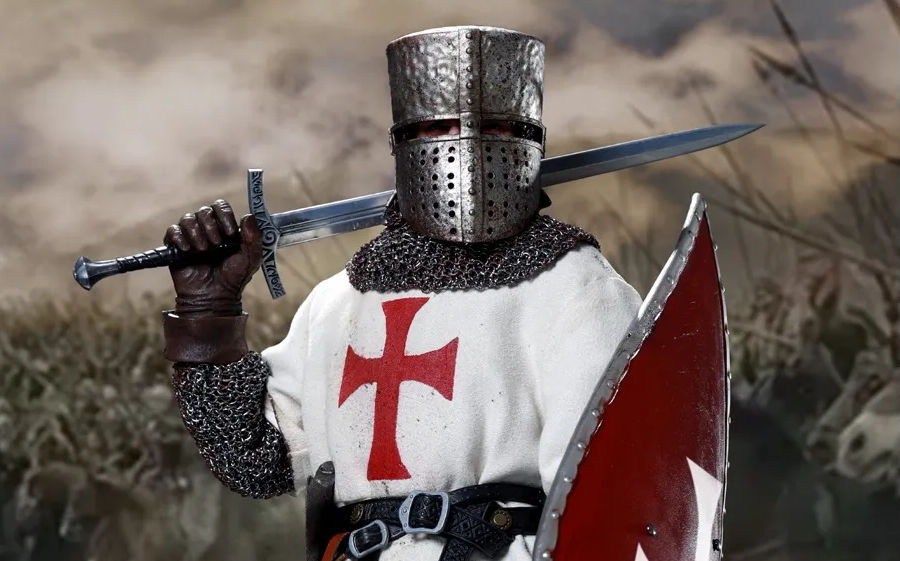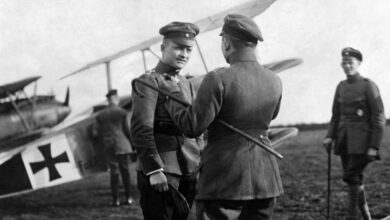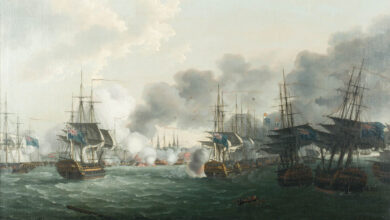
Podcast: Play in new window | Download
The Knights Templar was one of the most renowned military organisations of early-modern times, credited with inventing a modern system of banking and gaining a near immeasurable level of wealth as a result. The organisation has also been romanticised in popular culture, with novels such as Dan Brown’s Da Vinci Code making reference to them, whereas video games such as The Assassin’s Creed and Broken Sword series brought them into the digital realm.
Following the First Crusade in 1099, the city of Jerusalem was recaptured by the Christians and became a land of pilgrimage, with many who believed in the faith also believing that the area was the Holy Land.
With these pilgrimages came the danger of assault, robbery and murder by bands of outlaws and highwaymen. Hundreds, perhaps even thousands, of pilgrims, were killed during those early years, necessitating the creation of an opposition force that could help to protect people as they made their journey.
In 1120 the French knight Hugues de Payens conceived of the idea to create a monastic order with a duty to protect those making a pilgrimage to the Holy City. He brought his request to the King of Jerusalem, King Baldwin II, who agreed to the formation of the group, which was granted a headquarters in the royal palace on the Temple Mount.
Initially, the Templars took the name Poor Knights of Christ and the Temple of Solomon and relied on donations to continue their efforts to protect pilgrims. In fact, an early source of emphasis for the group revolved around their poverty, which is reflected in the emblem of two knights riding a single horse that has come to symbolise the group.
From their humble beginnings, with only ten knights to the order’s name, the Knights Templar began to rapidly expand. With support from Bernard of Clairvaux (later Saint Bernard), the group gained the support of a number of leading church members of the day. This led to an official endorsement on behalf of the church, which was followed in 1139 when Pope Innocent II issued a papal bull that provided the order with exemption from all local laws and officially recognised their status within Christendom.
This ruling meant that the Knights no longer needed to pay taxes to continue their operations and only need answer to the Pope. As a direct result of both their mission and their status, the order’s numbers began to swell. They fought in the Crusades, often being deployed first in an effort to break opposition lines. The knights soon gained a reputation for being truly fearsome in battle, however, as the years progressed the order began to veer away from its initial military intentions and more towards supporting the financial infrastructure of the Templars organisation itself.
This resulted in the organisation becoming amongst the richest in the known world during the period. A system was conceived whereby pilgrims could place their valuables with the order in one city and be given a credit note which could be redeemed when they reached their destination. It was the first instance of a modern banking system and it not only made the Templars’ organisation extremely wealthy, but it also improved the safety levels of pilgrimages as it quickly became known that most pilgrims would not be carrying any items of value, making them a less attractive target for marauders.
Though individual members were still sworn to a vow of poverty, the Knights Templars as an organisation continued to grow in wealth through donations and business dealings. A financial network was created across the whole of Christendom and the organisation came to own many tracts of land and became involved in various areas of business, all while under the protection of Innocent II’s papal bull.
This increasing wealth created resentment in many areas of Christendom. To those in positions of power, many of whom were indebted to the organisation in one way or another, the rise of the Templars was seen to be counter to the purposes of their initial inception.
This was combined with a turning of the tides in the constant battles between Christians and Muslims, as leaders such as Saladin helped Muslim forces to regain much of the land that had been previously lost. The Templars proved increasingly ineffectual in the face of superior tactics and numbers and Christendom’s last foothold in the Holy Land was lost in the early 1300s.
With their primary purpose now gone, the Templars became a prime target for those who valued their wealth. Accusations of demon worship were levied at the group, primarily by the likes of King Phillip IV of France, with many claiming members were made to deny Christ, worship false idols and engage in homosexual practices.
It is unlikely that such accusations were true, however, they were successful in further diminishing the already damaged reputation of the order. In the early hours of Friday 13 October 1307, King Philip IV’s orders were carried out and many prominent members of the order were arrested. This was followed by a papal bull issued by Pope Clement on 22 November the same year ordering all European monarchs of Christian faith to arrest all Templar Knights and seize their assets. Pope Clement eventually gave in to pressure from the French King and dissolved the order at the Council of Vienne in 1312. High ranking members of the order were tried, found guilty of heresy and were burned at the stake on 18 March 1314 in Paris. All of the lands and possessions of the Templars was turned over to the Knights Hospitaller and many members of the order were absorbed into their ranks or other military units. Some were simply pensioned off and allowed to live out the rest of their lives in peace.
Podcast: Play in new window | Download





